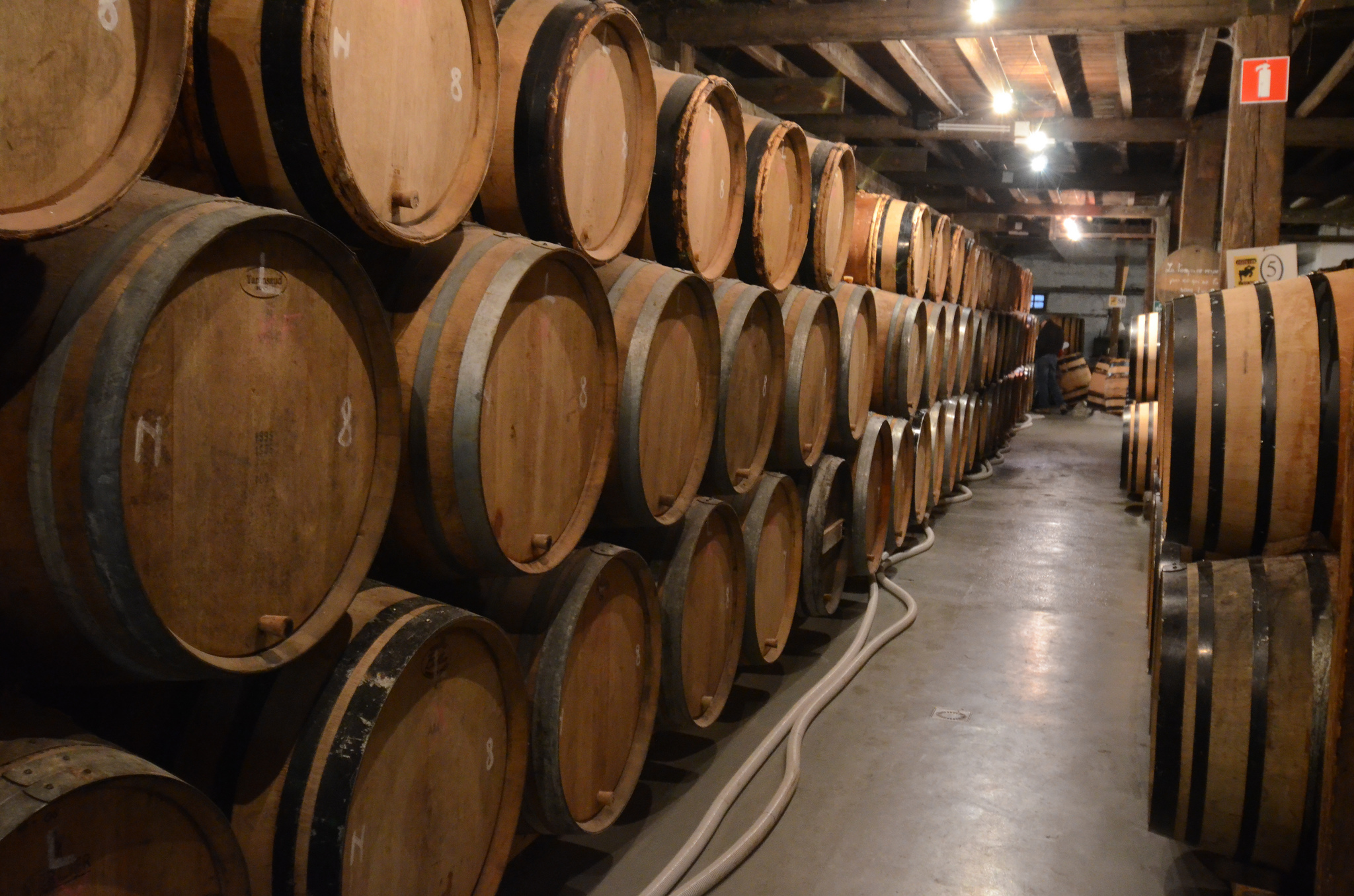Bacteria in my beer
I still remember the first sour beer I ever tasted. It was at least 12 years ago, at the renowned Russian River Brewing pub in downtown Santa Rosa, California. I tried a sip of Supplication, a brown ale aged in local pinot noir barrels with sour cherries, and I was no fan of the biting, acidic drink. But in the years since, I fell in love with sours and discovered a few personal favorites, some of which are still aging in our cellar today (beer aging is a story for another post).
Besides the taste, I find the microbiology behind sour beers fascinating. Most beer styles are made using brewer’s yeast – Saccharomyces cerevisiae or Saccharomyces pastorianus. These strains quickly convert sugars into ethanol, and their rapid growth protects the wort from contamination with other microorganisms. But from October to March each year, a few brewers in the Senne River valley near Brussels make a traditional sour beer called lambic, using wild yeasts – and bacteria.
To make lambic, the brewers cool the cooked wort overnight in large, open vessels, often located in the attic directly under the roof. During cooling, the wild microbes unique to this region fall into the wort, starting a spontaneous fermentation process that continues over a few years in wooden casks that the wort is transferred into. The bacteria and yeast populations grow and adjust in a complex succession that matches the changing conditions inside the casks – increasing carbon dioxide, decreasing oxygen, increasing ethanol and lactic acid, decreasing sugar, falling pH. When one population can no longer tolerate the habitat, a different organism takes over and thrives, leaving its own unique character.
It is known that lambic beer fermentation comprises four distinct phases: the Enterobacteriaceae phase, main fermentation, acidification, and maturation. (1, 2) But studies defining these phases microbiologically have been lacking, because biochemical methods to identify species at the adequate taxonomical resolution were limited. In 2014, a group of Belgian microbiologists overcame the hurdles and reported their analysis (3) of the microbial diversity during fermentation of lambic beer from Cantillon, a small brewery in Brussels founded in 1900. The researchers collected samples from a total of 4 fermentation casks from 2 different beer batches over 2 years and characterized the samples using various culture- and non- culture-based techniques.
The team performed denaturing gradient gel electrophoresis (DGGE) to fingerprint the bacterial and yeast communities and identified the predominant bands by DNA sequencing. They also tested 23 different combinations of growth medium and incubation conditions to culture bacteria and yeast isolates from the samples. They then used MALDI-TOF mass spectrometry as a high-throughput method to dereplicate these redundant isolates into unique clusters they could identify by DNA sequencing.
The results showed that several Enterobacteriaceae members predominated during the first month of fermentation, but as the S. cerevisiae and S. pastorianus yeast got going and started producing ethanol, the conditions became too inhospitable for most of them. By the second month, Pediococcus damnosus – dreaded by most standard beer brewers and winemakers due to its viscosity-causing properties – became the dominant bacteria and remained present throughout the entire fermentation. Months 2–3 saw an increase in lactic acid bacteria – which contribute to the sourness – and a simultaneous decrease in Saccharomyces spp. From 6 months onward, the yeast Brettanomyces bruxellensis dominated, with its high tolerance to both ethanol and acid.
Fingerprinting showed that the bacterial and yeast communities in both batches eventually stabilized at a similar composition. However, one of the batches took much longer to reach this point – 18 months vs. 6 months – probably because it was stored in the cellar where it was cooler. The researchers also sampled the brewery air and environment – the coolship, ceiling, attic, and casks – to try and identify the sources of the various yeast and bacteria in the lambic fermentation. But to learn about those results, you’ll have to read the full article. Or better yet, the next time you’re in or near Brussels, just drop by one of the authentic lambic breweries, and do a bit of sampling of your own!
References
- De Keersmaecker J. (1996) The mystery of lambic beer. Sci Am. 275:74–78.
- Van Oevelen D., Spaepen M., Timmermans P., Verachtert H. (1977) Microbiological aspects of spontaneous wort fermentation in the production of lambic and gueuze. J Inst Brew. 83:356–360.
- Spitaels F., Wieme A.D., Janssens M., Aerts M., Daniel H.M., Van Landschoot A., De Vuyst, L., Vandamme, P. (2014) The microbial diversity of traditional spontaneously fermented lambic beer. PLoS ONE 9(4): e95384.
Photo: Cantillon Barrels by Jim Kelly, Flickr
